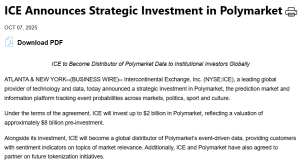New, state-of-the-art 10MW ammonia refrigeration system at the Clover Dairy Factory in Queensburgh, South Africa, powered under a Cooling-as-a-service model by Energy Partners Refrigeration.
Base Foundation
“As-a-service” models are pretty prominent across the global economy, particularly so in the software and communications sector. But one Swiss non-profit is extrapolating that model and deploying it globally to tackle one of the most pressing issues of our age – cooling.
BASE or Basel Agency for Sustainable Energy, a specialized partner of the United Nations Environment Programme, is busy globally advocating for “Cooling as a Service” or CaaS.
“We believe it is an innovative business model that enables a diverse range of end users of cooling systems to base their decisions on life-cycle cost rather than on the purchase price of cooling equipment,” said Daniel Magallon, managing director of BASE.
The non-profit believes going down the CaaS pathway would encourage as well as accelerate the deployment of high-end energy efficient cooling technologies without the need for high upfront investment, or opting for a cheaper but less efficient system to save on costs.
Why It Matters?
Magallon said the CaaS model BASE promotes involves end users paying for the cooling they receive, rather than the physical product or infrastructure that delivers the cooling.
“The idea, deployable globally, is a simple one – a cooling technology provider in any given region installs (and maintains) the cooling equipment, and recovers the costs through periodic payments made by the customer.”
The payments model typically involves a fixed-cost-per-unit for the cooling service delivered based on actual usage (e.g. dollars per tons of refrigeration, or units of cooled air).
“The provider also pays for the electricity consumed by the equipment, which is an incentive to install the most energy-efficient equipment, and to perform high-quality maintenance. This makes all the difference.”
According to the International Energy Agency’s “Future of Cooling” report cooling represents 10% of global electricity consumption – equivalent to 2.5 times the electricity use of Africa. If household and industrial fans are included in the mix, in addition to air conditioners, the figure rises to 20%.
The demand is expected to triple by 2050. The average efficiency of cooling systems sold today is less than half of what is typically available on shelves – and one-third of best available technology.
Therefore, the energy and cost savings potential by 2050 is tremendous and runs into trillions of dollars by some estimates, according to BASE.
“And cooling something we cannot do without in a warming planet. In many regions, cooling is not only a comfort but also a means of survival with air conditioning and refrigeration necessary for habitable living conditions, food security and life-saving healthcare,” Magallon said.
“Now imagine a scenario where a solution offers both a cost mitigation measure and an efficient cooling pathway. That’s CaaS for you.”
Getting Noticed
While the pay-per-use basics are clear, BASE works collaboratively to develop tools to enable the model from contracts to pricing tools, financial structures to promotional materials that communicate the value to potential customers.
The project also involves working with manufacturers and contractors to pilot the model. “Currently we are implementing the model in Grenada, Mexico, Costa Rica, Argentina, Nigeria, South Africa and India,” said Dimitris Karamitsos, CaaS Project Leader at BASE.
KoelFresh’s CaaS solar-powered cold room for agricultural storage in Rourkela, India.
Base Foundation
BASE’s work and the CaaS model have certainly not gone unnoticed. The non-profit is among the three energy category finalists for the Zayed Sustainability Prize 2026, awarded by the United Arab Emirates for innovative solutions to global challenges.
The UNEP’s Cool Coalition considers it to be a valuable partner. Back in 2019, the very year of its launch, the Global Innovation Lab for Climate Finance recognized CaaS as the most innovative and actionable financial instrument to scale up investments in climate change mitigation for sustainable cities.
Such accolades and acknowledgements serve as a great source of motivation for a non-profit like BASE, Magallon said.
“Winning the Zayed Sustainability Prize would allow us to accelerate our impact across more markets and reach the communities that need it most. What we are attempting with CaaS is to build a global ecosystem with multiple participants, myriad use cases and the joy of providing a fresh and tangible solution for a common problem.”
It is a problem that gets amplified in emerging markets. “Examples from India to Nigeria, spring to mind where access to cooling is a growing social and environmental challenge, especially with a critical need to strengthen cold chains in rural areas to protect local farmers,” Karamitsos added.
“We have proven examples of how fresh agricultural or dairy produce was prevented from perishing by cost-effective CaaS modelled services from local providers we work with.”
And its not just about helping farmers in emerging markets preserve harvests, but helping small enterprises grow sustainably, and communities adapt to rising temperatures.
BASE claims the model has catalysed over $160 million in investments in sustainable cooling technologies, saving 130 GWh of electricity and avoiding 81,000 tons of CO₂ emissions annually, so far.
“Ultimately, it is about persuasion and changing mindsets. We are convinced about the strength of the model, and believe it is the future of cost-effective and efficient cooling wherever the end-customer may happen to be,” Magallon concluded.
Source: https://www.forbes.com/sites/gauravsharma/2025/11/13/how-one-unep-partner-non-profit-is-making-cooling-as-a-service-cool/


